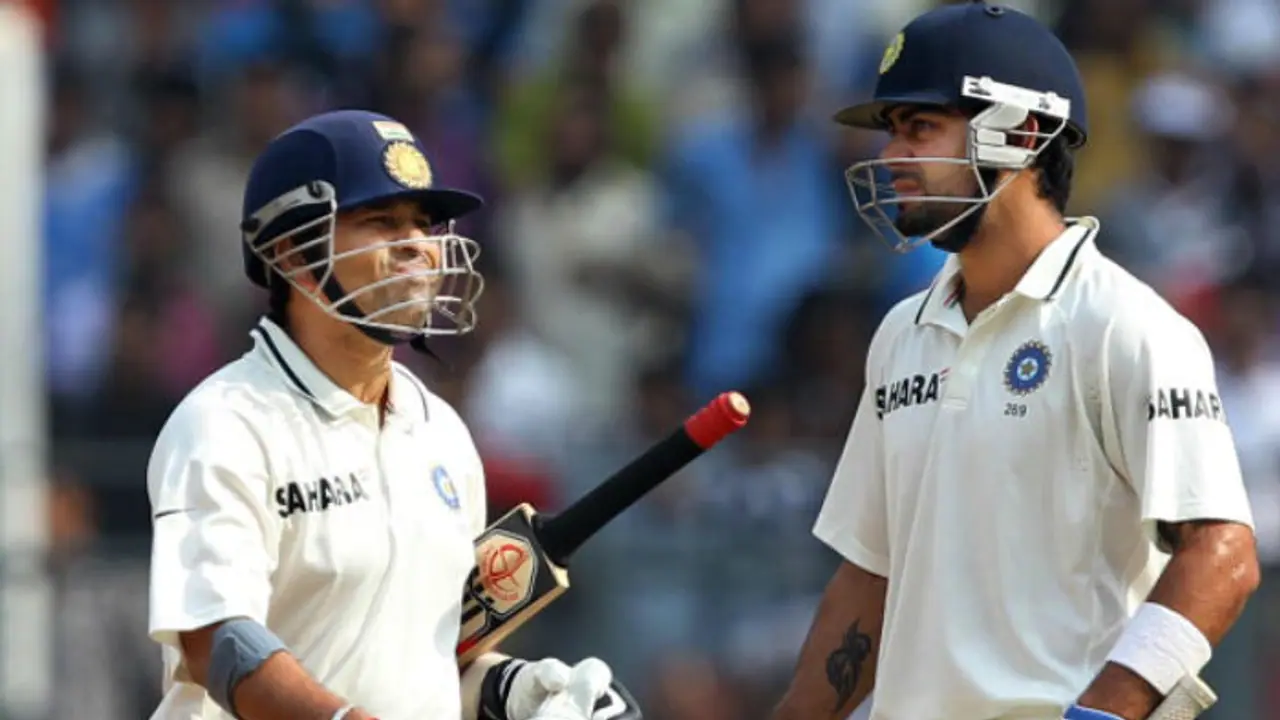Just like the 1990s, now too, India are blessed with one incredible batsman, but unfortunately India still seem no more than an one-man army
'Tigers at home, paper tigers abroad'.
Every Indian cricket fan remembers this saying. It was the harsh reality of Indian cricket whenever the team played on foreign soil.
Be it in England, Australia, New Zealand or South Africa, India’s weakness was exposed. Victories were very rare.
Amid all the gloom there was a silver lining.
One man took it upon himself to change the course of Indian cricket.
Sachin Tendulkar arrived on the scene in the late 1980s and raised hopes of the nation. He made his international debut in 1989 and in a couple of years, began to dominate world cricket.
But, it became a one-man show. India succeeded if Tendulkar succeeded. India failed if Tendulkar failed. That was the story through a large part of the 1990s.
Rival bowlers knew if they had the wicket of the Master Blaster, the rest of the team would crumble on its own.
With lack of preparation, technically-equipped batsmen and top-class bowlers, India surrendered series after series in alien conditions. But back home, it was a different scene altogether.
It was chalk and cheese.
Now, the ongoing England Test series is reminding one of those tough pre-millennium days in Indian cricket. India seem to have well and truly headed back to the 1990s era of Tendulkar. In a recent interview to MyNation, former India wicket-keeper Syed Kirmani felt as much.
Just like back then, now too, Indian cricket is blessed with one incredible batsman, but unfortunately India still seem no more than an one-man army.
Comparisons have been drawn between Tendulkar and Virat Kohli. The Delhi right-hander, just like the Mumbai master, has piled on runs and shattered several records. He is anointed as the successor of the Master Blaster.
As they say, statistics don’t reveal the entire story. But in the case of Tendulkar and Kohli's numbers, vis-à-vis Tests in England, Australia, South Africa and New Zealand, the similarity is striking.
If Tendulkar carried the entire burden of the team on his shoulder back then, now Kohli is doing the same. And statistics provide the proof.
Between November 1991 and December 2001, Tendulkar scored more than 20% of the team’s total runs in Tests in England, Australia, South Africa and New Zealand.
Kohli, since December 2013, has contributed over 20% of the side’s Test runs in the same four countries.
Tendulkar played 23 Tests during that period in those nations and amassed 1,991 runs (average 52.39) with nine hundreds and five fifties.
During those innings, Tendulkar towered over the rest of the top-order batsmen – Rahul Dravid, Sourav Ganguly, Mohammad Azharuddin, Sanjay Manjrekar and VVS Laxman.
Kohli, during the period mentioned, tallied 1,798 at an average of 54.48 (eight tons, five half centuries) from 17 Tests.
Just like Tendulkar, Kohli too has left his batting teammates far behind. Ajinkya Rahane, Murali Vijay, Cheteshwar Pujara, Shikhar Dhawan and MS Dhoni average less than the Delhi dasher.
In the first Test of the ongoing series in England, Kohli scored 200 runs (149 and 51) while the rest of the batsmen together could muster only 214.
One more similarity between Tendulkar and Kohli is that both batted at No 4.
The grim story of 1990s slowly changed in the new millennium when Ganguly took charge of the team. Under his bold leadership, India travelled well. Coach John Wright too was instrumental in preparing the side and making them a force to reckon with.
Dravid, Laxman, Virender Sehwag, Gautam Gambhir and others stepped up to the plate to provide India the much-needed stability in the batting.
In the bowling department, Zaheer Khan was India’s spearhead while Anil Kumble was the team’s spin ace.
While Kohli’s captaincy at home has been rewarding, thanks to the conditions and domination of the spin twins Ravichandran Ashwin and Ravindra Jadeja, the overseas Tests are a major concern – not with bowling but batting.
KL Rahul, Pujara, Rahane and others need to provide the support to Kohli just like Dravids, Laxmans, Sehwags and Gangulys did to Tendulkar.
The Fabulous Five of Indian cricket —Tendulkar, Dravid, Ganguly, Sehwag and Laxman — may not be there, but the current generation does have the capability to win matches for India abroad.
They need to prepare well and be guided. Maybe Dravid, who is with the India A team, will have to teach them the art of succeeding abroad!
Looking at the past and now the present, the future of Indian cricket when it comes to tours outside Asia, looks bleak.
The Board of Control for Cricket in India (BCCI) needs to take drastic steps to arrest the slide. The “A” tour concept is working well under the guidance of Dravid and some of the youngsters are coming up through the ranks.
But the question is whether they will be able to handle the rigorous schedule of Test cricket. Is too much of limited-overs cricket killing the ability to bat for longer periods? Many experts feel so.
Whenever India do miserably abroad, the much successful and appreciated Indian Premier League (IPL) is blamed.
After England, India have another big test when they travel to Australia later this year. If Kohli and his boys have to challenge the Aussies, then have to plan well.
The old adage of 'Tigers at home, paper tigers abroad' should be give way to 'Tigers everywhere'. After all, the Indian Test team is No 1 at the moment and they should act their rank. A true reflection of the top ranking would be to win series in tough, alien conditions.
The current crop of cricketers are truly blessed to have the aid of technology, which the past players did not have the advantage of.
Indian cricket is still waiting for a Test series win in Australia and South Africa. Unlike the greats of the past, Kohli will be keen to change that record.
